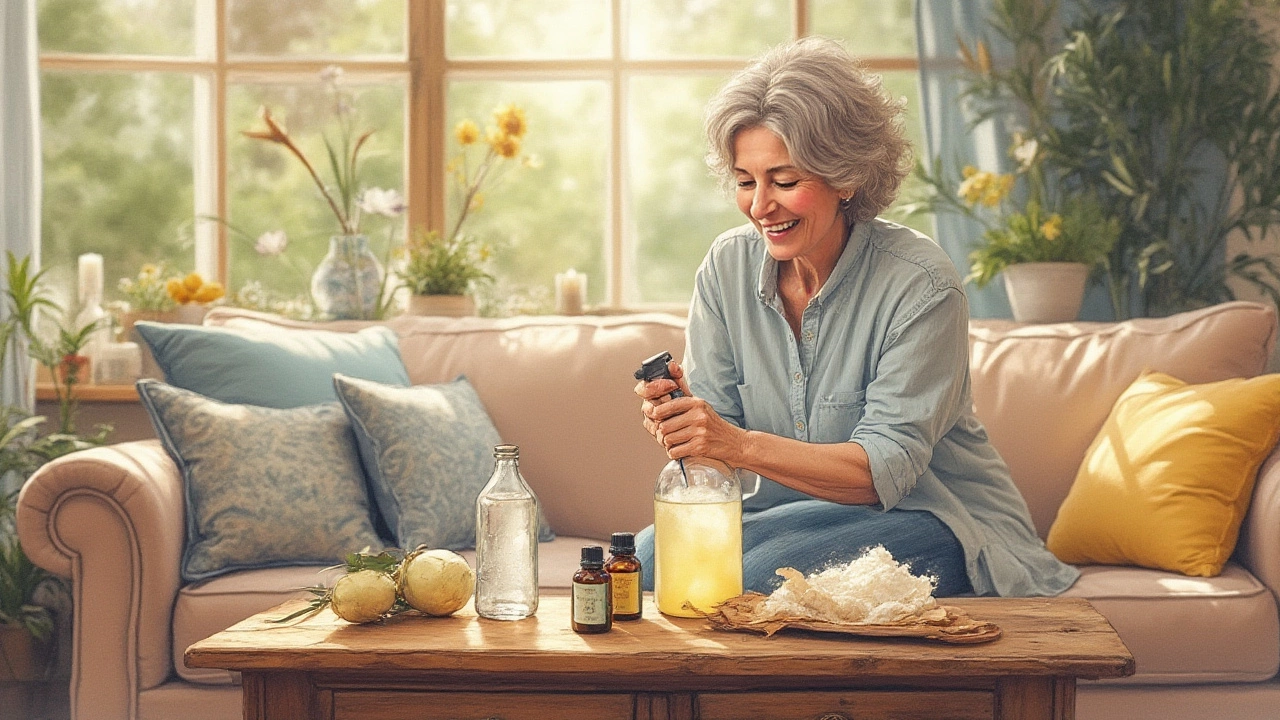Eco Friendly Upholstery Cleaner: Clean Your Sofa the Green Way
Got a couch that needs a lift but you don’t want to dump chemicals on it? An eco friendly upholstery cleaner lets you wipe away stains, odors, and dust while staying kind to the planet. In this guide you’ll learn why green cleaners work, which store‑bought options are worth the money, and a few easy recipes you can whip up at home.
Why Choose an Eco Friendly Cleaner?
Traditional spray cleaners often hide dirt with fragrance or leave behind residues that can irritate skin and pets. Green cleaners use ingredients like vinegar, baking soda, citrus oil, or plant‑based surfactants. These components break down grime without lingering toxins, so you breathe easier and your fabric lasts longer. Plus, many biodegradable formulas won’t pollute waterways when you rinse the floor.
Another win is cost. A bottle of plant‑based foam usually costs less per use than a premium chemical spray. When you compare the price of a DIY mix of vinegar and water to a brand‑name product, the savings add up fast. And because the ingredients are safe, you can let kids or pets be around while you work.
Top DIY and Store‑Bought Options
DIY Spritz: Mix one cup white vinegar, two cups warm water, and a tablespoon of liquid castile soap. Add a few drops of lemon essential oil for scent. Pour into a spray bottle, shake, and test on a hidden spot. This solution lifts light stains and neutralises odors without harming the fabric.
Baking Soda Deodoriser: Sprinkle a thin layer of baking soda over the upholstery, let it sit for 15‑20 minutes, then vacuum. The powder absorbs smells and loosens dried dirt, making a quick refresh perfect for high‑traffic sofas.
Store‑Bought Green Brands: Look for cleaners labeled “plant‑based,” “biodegradable,” or “non‑toxic.” Brands like Method, Ecover, and Seventh Generation offer foam or spray formulas that work on fabric, leather, and microfiber. Check the ingredient list – ingredients such as coconut‑derived surfactants, soy‑based solvents, or pine oil signal a greener product.
Spot‑Treat Stains: For red wine or coffee, blot the spill, then apply a mix of equal parts hydrogen peroxide (3%) and water with a drop of dish soap. Test first, then gently dab – the peroxide lifts the pigment while the soap breaks the oil.
When you’re done, let the upholstery air‑dry fully before using it again. Opening windows or running a fan speeds up the process and prevents mildew.
Remember to read the care tag on your furniture. Some fabrics, like silk or antique upholstery, need a gentler approach or professional cleaning. When in doubt, start with the mildest solution and work up.
Switching to an eco friendly upholstery cleaner is a small step that makes a big difference. You protect your health, extend the life of your furniture, and do a favor for the environment – all without spending a fortune. Give one of these methods a try today and see how fresh your sofa can feel.

Best DIY Upholstery Cleaner: Proven Recipes and Tips for Spotless Results
Dig into the top homemade upholstery cleaners, pro cleaning hacks, and the real science behind stain removal. DIY tricks for safe, fresh, and spotless furniture.
Read More